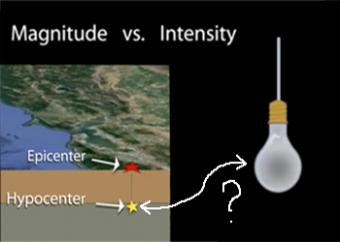
What controls the shaking you feel during an earthquake?
We compare a light bulb to an earthquake to clarify the difference between magnitude and intensity, two concepts that are often used interchangably, but in error. Though both are related to a measured earthquake, intensity reflects what is felt during an earthquake at many locations, and the magnitude is a single measured value. Intensity was originally calculated by gathering personal, anecdotal reports during an earthquake. intensity can be estimated by instrumentally, but the definitive intensity is assigned either via Did You Feel It (DYFI), or via expert judgement, as was done historically. (An IRIS/USGS collaboration)
CLOSED CAPTIONING: A .srt file is included with the download. Use an appropriate media player to utilize captioning.
Earthquake shaking is controlled by:
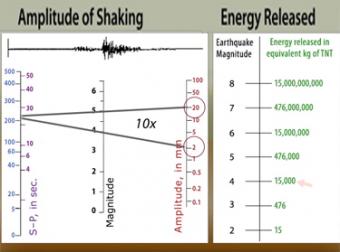
The "moment magnitude" scale has replaced the Richter scale for large earthquakes. Scientists have developed far-more sensitive seismometers that, with faster computers, have enabled them to record & interpret a broader spectrum of seismic signals than was possible in the 1930's, when the Richter magnitude was developed. Find out what scientists learn from seismograms.

Animation of the principles of a drum-style horizontal seismograph station that records back- and-forth (N-S, E-W) movement.
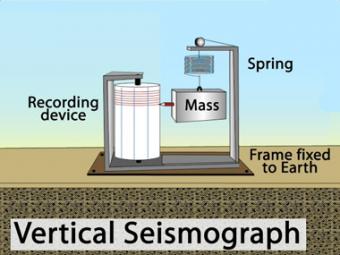
Animation of the principles of a drum-style vertical seismograph station that records up-and-down movement.
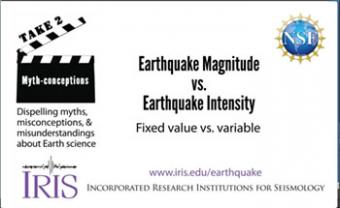
Magnitude and intensity are both related to the size of an earthquake, but they each measure different aspects. One is measured using seismometers; the others is felt. Let's use a lightbulb as an analogy.
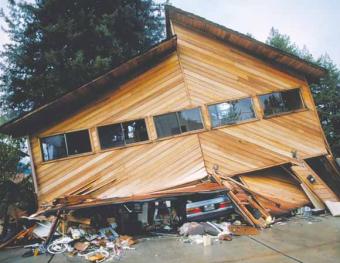
In this activity, students use a three-component accelerometer (iPhone, laptop or USB) to examine their assumptions about how 'hard" the ground shakes during an earthquake.